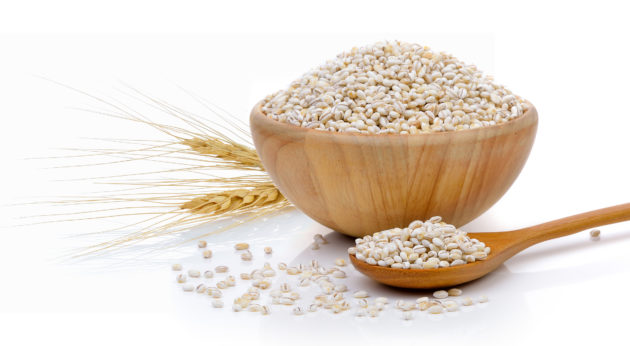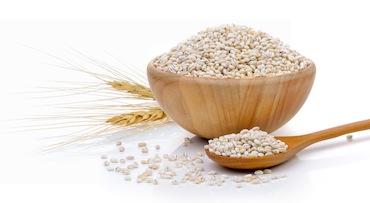
Researchers unravel barley’s genome
Food in Canada
Food In Canada Processing Research & Development Bake & Snack Food barleyThe discovery could mean better yields and enhanced nutritional value
 Barley Grains in the wood bowl on white background
Barley Grains in the wood bowl on white background Gatersleben, Germany – A group of researchers has mapped the entire genome of barley.
Sci-News.com (Science News) reports that the International Barley Sequencing Consortium (IBSC) announced the news in late April.
Barley, says Sci-News.com, is the world’s fourth most important cereal crop after wheat, rice and

Image: ThinkStock
maize. IBSC has published its work in the journal Nature.
Barley, says the story on Sci-News.com April 27, 2017, is cultivated in all temperate regions from the Arctic Circle to the tropics. It’s known for its tolerance to cold, drought, alkali and salinity.
Barley is found in breakfast cereals and all-purpose flour and it helps bread rise, says Sci-News.com. Malted barley also gives beer its colour, body, protein and the natural sugars needed for fermentation.
In a statement, the IBSC says the mapping of barley’s genome can lead to higher yields, improved pest and disease resistance and enhanced nutritional value.
It will also facilitate the development of new and better barley varieties able to cope with the demands of climate change. It should also help in the fight against cereal crop diseases, which cause millions in losses every year.
Barley, says IBSC, was first cultivated more than 15,000 years ago. It belongs to the Triticeae family, which includes wheat and rye, and that together provides around 30 per cent of the calories consumed worldwide.
In the statement, IBSC writes the sequencing will “accelerate research in barley and its close relative wheat. Armed with this information breeders and scientists will be much better placed to deal with the challenge of effectively addressing the food security agenda under the constraints of a rapidly changing environment.”
For more on barley and IBSC, click here.
Print this page